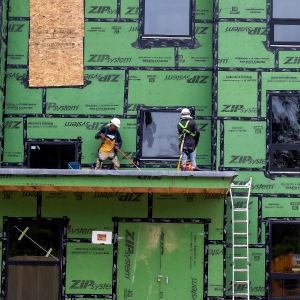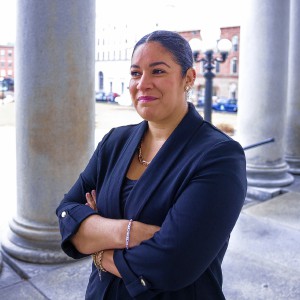Granite Geek: Another election, another win for gerrymandering
| Published: 11-17-2022 7:02 PM |
Last week’s election includes some perfect examples of why political parties don’t want to give up the job of drawing the boundaries of voting districts.
Start with the five-person New Hampshire Executive Council, a poster child for the power of redistricting.
Overall, a tiny majority of votes statewide were cast for Democratic candidates in those races – 50.12% – yet just one seat was won by a Democrat as compared to four by Republicans. That is due largely to district boundaries drawn by the GOP-dominated legislature, which is presumably happy with the result.
The state senate result is almost as lopsided: 50.51% of votes were cast for Democrats but the GOP won 14 of the 24 seats.
Go south over the border and the political calculus is switched but equally lopsided. About 9% of Massachusetts registered voters declare themselves to be Republican – well over 430,000 people – but the GOP doesn’t own a single one of the nine Congressional seats whose boundaries were drawn by Democrats. In fact, I don’t think the Bay State has sent a Republican to the U.S. House of Representatives since 1997.
Both these show the power of gerrymandering, a lovely term made up after 19th-century Massachusetts governor Elbridge Gerry approved a voting map with a district so distorted that it looked like a salamander if you squinted. Incidentally, he did it to favor Republicans.
A gerrymandered map is one that has been deliberately created by elected officials to make it easier for their party to win. There are two ways to do this: By spreading out the voters you want to ignore, or by clumping them.
You spread them out when they are in a minority overall, as is the case with Republicans in Massachusetts. The idea is to make sure that no district contains enough of a concentration to create a local majority that can win that district.
Article continues after...
Yesterday's Most Read Articles
 Federal government to appeal New Hampshire judge’s ruling on legal status of Dartmouth international student
Federal government to appeal New Hampshire judge’s ruling on legal status of Dartmouth international student
 Celebrating independence: A list of local July 4 celebrations
Celebrating independence: A list of local July 4 celebrations
 ‘There’s tradition up here’ – Morrill Farm approaches its centennial, celebrates evolution and growth
‘There’s tradition up here’ – Morrill Farm approaches its centennial, celebrates evolution and growth
 ‘It's borderline criminal’ – Manufactured housing was an affordable homeownership option. Now, investor-owned parks are pricing residents out
‘It's borderline criminal’ – Manufactured housing was an affordable homeownership option. Now, investor-owned parks are pricing residents out
 Around Concord: Steps to nowhere – but it used to be somewhere
Around Concord: Steps to nowhere – but it used to be somewhere
You clump voters if they are close to a majority, as with New Hampshire’s statewide Democratic voters. The idea here is to draw boundaries that gather as many of these voters as possible into a single district or a small number of districts, reducing the ability to affect other districts. They will win those races but still be a minority in the overall governing body.
This is what happened with the New Hampshire Executive Council. District 2 was tweaked by the GOP-dominated legislature after the 2020 census so that it tippy-toes from one Democratic stronghold to another across the entire state, looking positively salamander-like. Cinde Warmington won that district in a landslide, but from the Democratic point of view this means tens of thousands of votes were wasted that could have helped their candidates in adjoining districts. The Republican viewpoint, of course, is different.
A number of efforts have arisen over the years to squelch the practice of gerrymandering. Courts can get involved if it’s too extreme, especially if the boundaries are deemed to deny civil rights to racial or ethnic groups.
An obvious idea is to take the power away of redistricting from state legislatures and give it to an appointed body that will be more objective. However, elected officials who were voted into office because of the current system tend to be reluctant to do this. In New Hampshire, Gov. Sununu has twice vetoed legislative efforts to create redistricting advisory bodies.
A bill this year seeking to do something similar by establishing “redistricting criteria” – among them: “Districts shall be drawn in compact shapes and shall avoid jagged edges and extensions,” which would seem to outlaw Executive Council District 2 – went nowhere.
Part of the complication is that “objective” is hard to define as it balances needs such as racial and ethnic representation, equal population sizes, the grouping of similar communities, and the like. Since this is what engineers and scientists call an optimization problem, mathematicians have gotten into the act, proposing algorithms and methods to analyze districts for fairness.
There is considerable interest in academic circles for this approach but it hasn’t gotten very far in the political realm. In 2018 in New Hampshire, for example, a legislative committee squelched a bill that would have used “efficiency gap analysis” to analysis districts and decide whether any were “deemed to be gerrymandered and therefore not valid” and redrawn before the next election.
Realistically, despite the efforts of groups like FairMaps and Princeton University’s Gerrymandering Project, it seems likely that less-than-fair (at best) maps will continue to be part of our democracy for the foreseeable future. I imagine that political parties are already thinking about how they can control more legislatures in 2030, the next time the U.S. Census gives them the opportunity to shake things up.
]]>







 New Hampshire school phone ban could be among strictest in the country
New Hampshire school phone ban could be among strictest in the country Concord became a Housing Champion. Now, state lawmakers could eliminate the funding.
Concord became a Housing Champion. Now, state lawmakers could eliminate the funding. ‘A wild accusation’: House votes to nix Child Advocate after Rep. suggests legislative interference
‘A wild accusation’: House votes to nix Child Advocate after Rep. suggests legislative interference  Sununu decides he won’t run for Senate despite praise from Trump
Sununu decides he won’t run for Senate despite praise from Trump
